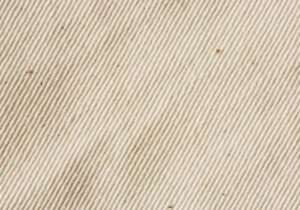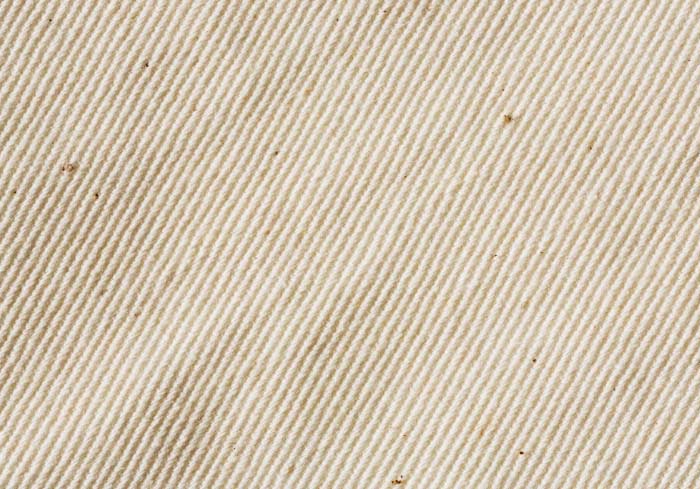 Muslin refers to a light form of cotton which is not very tightly woven.
Muslin refers to a light form of cotton which is not very tightly woven.
So, if you’re not an avid sewer, you can consider it a weak way of cotton, which isn’t as strong as cotton and has weaker properties.
Moreover, if you’re in the sewing industry, most of the time, people use the word muslin; they are referring to the test garment, a kind of a prototype.
This is because most test garments are made from muslin before they’re finalized. So, let’s see why it’s used.
How is Muslin Made
Before diving into the uses and the types of muslin, let’s briefly look into how muslin is manufactured, so you can have an in-depth understanding of what we’re talking about.
First off, be sure that there isn’t any single quality of muslin worldwide, and it’s entirely relative.
As I already mentioned, it’s low content cotton, so the muslin’s pureness determines how fine the quality is.
Muslins are plain woven, and the weight determines the quality of the fabric. The finishing is done soft while the warps are spun evenly as to increase the quality.
Once they’re made, they are piece-dyed, and if the quality is high, they are even passed through looms to make certain patterns upon them.
Types of Muslin
Muslins come in various types and qualities, and as discussed previously, there are different weights used in the making, which causes a difference in the output quality.
So, here are the four main types of muslins.
Gauze is the most lightweight fabric amongst all other types of muslins. If you want the most lightweight fabric available, you could go for this one.
- Mull
Mull comes in on the second number when it comes to weight, and while it’s heavier than Gauze, it’s lighter than the other types. It is usually manufactured from a mix of cotton and silk and is used where Gauze is too light to give structure to the fabric.
- Swiss Muslin
Swiss muslin ranks third when it comes to weight, and it is heavier than Gauze. It’s used where more weight is required, and even patterns are made on this kind of muslin.
- Sheeting
On the last spot, we have sheeting. This is the most challenging form of muslin and is the coarsest amongst all others.
10 Ways to Use Muslin
Muslin is a very useful form of garments, and there are many uses for them. They are used frequently in the sewing industry, and here are ten different purposes they are mostly used for.
Quilting
While some forms of muslins are used only for the back part of a quilt, some can even make a whole quilt by themselves.
Even if the muslin isn’t dyed, their natural color is excellent for purposes like quilting. Moreover, if you don’t like it, you can easily pattern or even dye it.
Upholstery
Upholstery is another central area where muslin has a lot of application.
Many sofas and seats use muslin cloth for making their covers, and again, the natural color of muslin is very favorable in this scenario.
Blanket
Baby blankets usually need to be light, and this is exactly where muslin comes in.
They can be used to make these blankets, and not only do the blankets turn out to be very lightweight, but they are also pretty warm.
Washcloth
If you remember, I described how light muslin is, and that is exactly the reason why it is such a good washcloth.
Due to the light nature, the breathability of muslin is amazing, and hence the suitability for washcloth is pretty high.
Decoration
While decorating your house for different events like birthday parties of Christmas, you would often need to find muslin fabrics, which are light in weight and easily moldable.
So, they are quite easy to use when it comes to décor, and you could also use them in ribbons.
Their structure makes them look quite fancy, and the finely made ones are even better for decoration purposes.
Cooking
You might be wondering why someone would need a muslin for cooking, right? Well, fabrics often come in handy while cooking, and especially the kind muslin is.
Not only could muslin help soak up the moisture from various fruits or vegetables, but you can also use it to cover up the unused food to keep it away from insects.
Theater
Theaters have been using muslins for a long time now, and they have a major part to play in all the stage settings and their designs.
Inner Wear
Innerwear is another area where you cannot use thick fabric and need something loose and stretchy, exactly the focal points of muslin.
They make extremely good innerwear, and they are not so thick as to make you comfortable and do the job just fine.
Embroidery
Embroidering is quite easy to do on muslin than it is in regular clothes.
Mainly due to the ease of the power needed to hold them and setting them in the shape you like.
This makes embroidery work quite easy, and designers find it quite easy to deal with muslin due to this.
Clothing Prototypes
Last but not least, muslin has a very high demand when it comes to clothing prototyping. Before the actual clothes are made and the designs are finalized, designers first check the muslin designs to see how it would look in real life.
This shows the exact design in a prototype’s form and doesn’t waste the cloth as well if the design doesn’t seem suitable.
Conclusion
So, that’s it.
We have seen what muslin is, the different types, and where it is used the most. This article will provide you a basic overview and everything you needed to know about muslin.
If you have already gone through the article, you would know a great deal about muslin by now, and it could form a basis of how you would like to interact with this piece of fabric in the future and whether you would be using it not.
Read Also:

